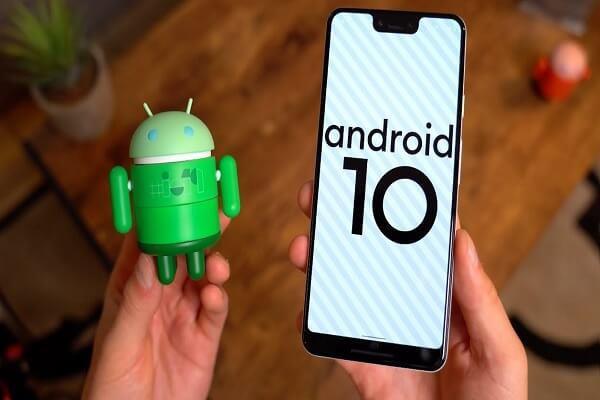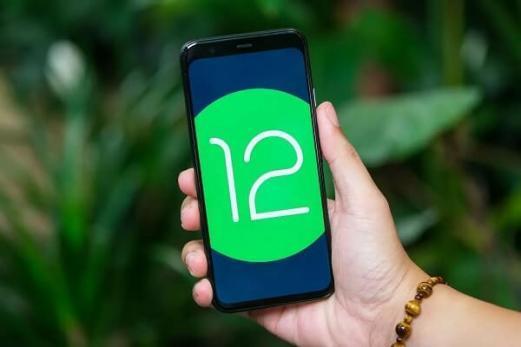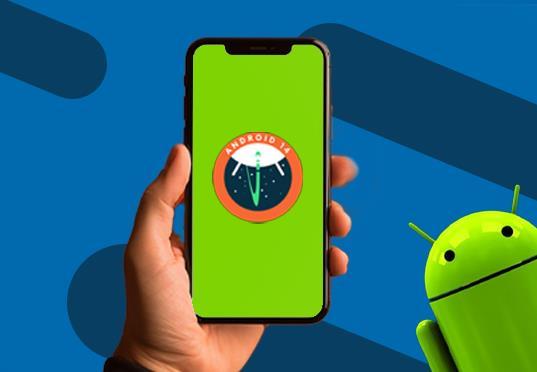
International Research Journal of Engineering and Technology (IRJET) e-ISSN: 2395-0056
Volume: 11 Issue: 10 | Oct 2024 www.irjet.net p-ISSN: 2395-0072


International Research Journal of Engineering and Technology (IRJET) e-ISSN: 2395-0056
Volume: 11 Issue: 10 | Oct 2024 www.irjet.net p-ISSN: 2395-0072
Sanika Randive1, Rupashree Thakur2
Under The Guidance Of Asst.Prof.Sonal Nilesh Patil3
1PG Student, Department of Information Technology, Keraleeya Samajam(REGD. ) DOMBIVALI’S Model College(Autonomous), Maharashtra, India
2PG Student, Department of Information Technology, Keraleeya Samajam(REGD. ) DOMBIVALI’S Model College(Autonomous), Maharashtra, India
3Assistant Professor, Department of Information Technology and Computer Science, Keraleeya Samajam(REGD. ) DOMBIVALI’S Model College(Autonomous), Maharashtra, India ***
Abstract:
The android operating system is an for mobiles and is rapidly getting market shares, with lots of smart phones andtabletseitherlaunchedorsettobelaunched.Itusesa modified version of Linux kernel 2.6. Google created androidaspartofOpenHandsetAlliance.
INTRODUCTION:
Androidis an operatingsystemand softwareplatform for mobile devices, based on the Linux kernel, and developed by Google and later the Open Handset Alliance. It permits developerstoputinwritingmanagedcodewithintheJava language, controlling the device via Google- developed Javalibraries.Androidisavailableasopensource.Android may be a freely downloadable open supply software package stack for mobile devices that features an OS, middlewareandkeyapplicationsbasedonLinuxandJava. Google purchased the developer of Android in 2005, and Android was revealed in 2007. Google launched the Android code as open-source under the Apache License. Android has lots of developers writing applications all overtheworld.Firstofallthedeveloperswritetheirscript in Java, so transfer the apps from the third party sites or on-linestores.

1. Android Version 1.0 – 1.1: (No Code name)

Google released its first commercial Android version 1.0(NoCodename)in2008inHTCDream.
This version of Android was very basic but had Google applications like Gmail, YouTube, Calendar, Maps, Search, Instant Messaging, and many more. All of these applications were integrated into theAndroid Operating Systemdirectly.
It also supported features like HTML and XHTML web pages,acamera,Wi-Fi,andcamewithBluetoothsupport.

2. Android Version 1.5: Cupcake

Fig-2: ANDROIDVERSION1.5:CUPCAKE
In2009, Android released itssecond release,Android version1.5Cupcake.
Withthisrelease,thetraditionofnamingtheAndroid versionsafterconfectionariesstarted.
With Cupcake, Android introduced the first on-screen keyboard as people moved to touchscreen smartphonesfromkeypadstylehandsets.
They also introduced a framework for the third-party appwidgets,whichwasasignificantstep.
Cupcake also introduced the platform’s first video recordingoption.
3. Android Version 1.6: Donut

Fig-3: ANDROIDVERSION1.6DONUT
In the fall of 2009, Android dropped its next update, Android1.6Donut.
It came out at the right time, as the world slowly transitioned towards bigger screens phones and resolutionphones.
Donutcamewithbuilt-insupportforCDMAnetworks, whichhelpedAndroidgrowfastly.
Thisversion introduced manynew featureslikevoice and text entry search, bookmark history, and WVGA resolution.
It also allowed users to select multiple photos for deletionatatime.
4. Android Versions 2.0 – 2.1: Eclair

Android2.0EclairwasreleasedjustsixweeksafterDonut version.
Android with Eclair version, became popular among the masses,duetothehypecreatedaroundMotorola’sDROID phoneandthemarketingcampaignledbyVerizon.
It introduced SMS, MMS, voice-guided turn-by-turn navigation and real-time traffic information, pinch-tozoom capability (which only Apple had at that time), Bluetooth2.1,fixedminorAPI,andfewbugfixes.
5. Android Version 2.2: Froyo

Froyo update was released four months after Eclair’s introduction.
This version of Android mainly focused on back-end performance,speed,andmemoryoptimization. International Research Journal of Engineering and Technology (IRJET) e-ISSN: 2395-0056 Volume: 11 Issue: 10 | Oct 2024 www.irjet.net p-ISSN: 2395-0072

International Research Journal of Engineering and Technology (IRJET) e-ISSN: 2395-0056
Volume: 11 Issue: 10 | Oct 2024 www.irjet.net p-ISSN: 2395-0072
Inaddition,itintroducedvoiceactions,whichallowed the users to perform basic functions like speaking a command,makingnotes,andgettingdirections.
ThisversionalsosupportedAdobeFlash,whichApple neverofferedtousers.
6. Android Version 2.3: Gingerbread

With Gingerbread, Android started destroying distinctivevisualdesign.
For example, the Android mascot is green in colour and this version’s prominent colours were Green and Black,whichwasvisiblethroughouttheirUI.
In addition, Gingerbread supported an extra-large screens, a simplified interface, enhanced copy/paste functions, NFC (Near Field Communication), and a hostofimprovements.
7. Android Versions 3.0–3.2: Honeycomb

Android released Honeycomb version in 2011 for the firstAndroid-basedtablet,theMotorolaXoom.
With subsequent updates, 3.1 and 3.2, Honeycomb remainedatablet-exclusiveentity.
This was a detour for Android’s visual appeal, as this time it had blue coloured holographic design instead oftheirusualblackandgreencombo.
Inaddition,itwasdifferent,designedtomakemostof thetablet’swidescreenspace.
8. Android Version 4.0: Ice Cream Sandwich

Fig-8:ANDROIDVERSION4.0:ICECREAM SANDWISH
IceCreamSandwichmarkedtheentryofAndroidinto themoderndesignlanguage.
While the Honeycomb version is considered the connection between old and new design, Ice Cream Sandwich refined all the visual elements with single, unified UI vision that reunited phone and tablet design.
It carried over the card-like appearance from the Honeycombandalsointroducedswiping,commonfor navigatingacrosstheOS.
Italsobroughtaframeworkordesignstandardization known as ‘Holo’ across OS and Android’s application ecosystem.
9. Android Versions 4.1–4.3: Jelly Bean

Fig-9:ANDROIDVERSION4.1-4.3:JELLYBEAN

International Research Journal of Engineering and Technology (IRJET) e-ISSN: 2395-0056
Volume: 11 Issue: 10 | Oct 2024 www.irjet.net p-ISSN: 2395-0072
Android Jelly Bean was introduced in 2012 .This versionmadethebestimpressionsamongnewusers.
Jelly Bean was built on the foundation built by Androidversion4.0Icecreamsandwich.
It polished many rough edges, making OS more attractiveandappealing.
Inaddition,italso improvedaccessibilityandoffered multiple features like screen lock, bug removal, 4K support,andGoogleNow.
10. Android Version 4.4: KitKat

Fig-10:ANDROIDVERSION4.4:KITKAT
Latein2013,AndroidreleasedKitKat.
This Android version introduced the “OK Google” support, offline music support, smart caller ID, better application compatibility, and many other built-in features.
11. Android Versions 5.0–5.1: Lollipop

Fig-11:ANDROIDVERSION5.0-5.1:LOLLIPOP
WiththeversionLollipop,Androidreinventeditself.
Amongst all these versions in Android list, it established the material design standard, which stands even today. This gave the OS a fresh and new
visual look across all Android applications and even otherGoogleproducts.
Furthermore, the team maximized the usage of cardbased concept, which became a core pattern for the Androidteam.
It also introduced at-a-glance access for all the notificationsfromlockscreenitself.
In addition, Lollipop improved the ‘OK Google’ commandsupport.Thisfeatureofvoiceactivationwas extended to work even when the device’s screen was off.
12. Android Version 6.0: Marshmallow

Fig-12: ANDROIDVERSION6.0:MARSHMALLOW
Marshmallow was little bit updated when compared totheLollipopversion.
With this version, Android started the trend of releasingamajorupdateeachyear.
Marshmallow introduced support for fingerprint readers, USB-C, Application Standby feature, Doze modetosavebatterylife,andmanymore.
13. Android Version 7.0 – 7.1: Nougat

Fig-13: ANDROIDVERSION7.0-7.1:NOUGAT
The Android Nougat is popular for releasing Google Assistantfeature.

International Research Journal of Engineering and Technology (IRJET) e-ISSN: 2395-0056
Volume: 11 Issue: 10 | Oct 2024 www.irjet.net p-ISSN: 2395-0072
ThisAndroidversionofferedsomeimprovements,but allofthemweremeaningful.
For example, they included split-screen mode, a Data Saver feature, file-based encryption, battery usage alerts, a zoom-in screen, and many more new features.
Google also released the Pixel, its first self-made phone,atthesametime.
14.Android Version 8.0 – 8.1: Oreo

Oreo was launched in 2007 .This version of Android brought in some of the best features, like picture-inpicture support, adaptive icons, 2x booting speed, Google Play Protect, a notification snoozing option, andmanyfeatures.
ThisAndroidversionincludedmanyelementsaligned with Google’s goal of aligning Android and Chrome Operating System and transforming the Chromebook userexperience.
It also helped in Project Treble, which helped device manufacturers offer more punctual software updates throughamodularbaseforAndroid’scode.
15. Android Version 9.0: Pie

Pie update breathed in some fresh air to the Android mobile Operating System. It transformed and gave a newlooktoAndroidtomakeitmorelatest.
The most popular change was mixed gesture/button navigation system, which replaced Android’s Black panelfortheBack,Home,andOverviewkeys.
Piealsointroducedmanyproductivityfeatures,which werenotthereinpreviousversionsofAndroid.
This version added many security features and privacy enhancements and intelligent systems to managethepowerandscreenbrightness.
16.Android Version 10

With Android 10 version, Android removed the naming tradition of each major release along with an itemofconfectionerySeptemberin2019.
This version introduced even more visual interface updates for the Android gestures and a swipe-driven navigationapproach.
AndroidVersion10alsobroughtmoreimprovements and enhancements like granular permissions, control over location data, productivity features, and themes acrosstheOperatingSystem.
17.Android Version 11


International Research Journal of Engineering and Technology (IRJET) e-ISSN: 2395-0056
Volume: 11 Issue: 10 | Oct 2024 www.irjet.net p-ISSN:
Android 11 was released during the in September 2020.
It offered a substantial Android update visible on the surfaceandmoreback-endimprovements.
Privacy issue was the major concern for mobile users across the globe. Android 11 addressed it appropriately and brought in a loads of privacyenhanced features.For example, Android 11 introduced more granular app permissions that users canlimit.
It remove the complexities from all the panels and introduced conversation-style notifications, native screen-recording features, and connected-device controls.
18.Android Version 12

Fig-18: ANDROIDVERSION12
GooglereleasedAndroid12in2012.
Android 12 version was largely focused on surface designs.
The Android 12 completely transformed the standard to create something known as Material You, a very visuallypersonalizedAndroidversion.
It also renewed its focus on widgets, other improvements, and easy accessibility with separate Artificial Intelligence sections to function independently.
19.Android Version 13

Fig-19: ANDROIDVERSION 13
Android 13is a stable Operating System launched in 2022 with a new interface design for handheld devices.
While this version also lays the foundation for multipurpose products, it’s gearing up for bigger screens and resolutions, which was ultimately appearedonthenewestGooglePixeltablet.
This Operating System version has made strides in improvingsecurity,privacy,andperformance.
20. Android Version 14

Fig-20:ANDROIDVERSION14
The name of the latest Android version is Android 14 October2023.
It targets to provide rich camera and media experiences with Ultra HDR, loss free USB audio, and morecameraextensionstodevice.
Android users can personalize their applications further with features like per-app languages, predictive back, grammatical inflection, regional preferences,andmore.

Volume: 11 Issue: 10 | Oct 2024 www.irjet.net
Android 14 also has added features like Health Connect (for health and fitness insights) and CredentialManager(tomakesimplesign-in).
21. Android Version 15

Fig-21: ANDROIDVERSION15
Android15issettobelaunchin2024inGooglePixels withseveralnewfeaturesandenhancedcapabilities.
A developer version or preview has been released in February with a second developer version is released inMarch.
TheversionincludesfeatureslikeSDKandtools,APIs, system images, and Flash-to-OTA updates for Google Pixeldevice.
CONCLUSION:
We have learned through our analysis that android is farmorediverseOSthaniOSandWindowsPhoneMobile. Android has grown rapidly over the past years becoming the most used smartphone operating system intheworld.
It'sasaresultofandroiddoesnotlaunchonephone from one company with one new OS once a year, but countless phones from numerous companies, adding their own twist, throughout the year, developing gradually day-byday.
References:
•https://developer.android.com/guide/platform
•https://www.intellectsoft.net/blog/best-androidframeworks/
•https://trainings.internshala.com/blog/androidversions/